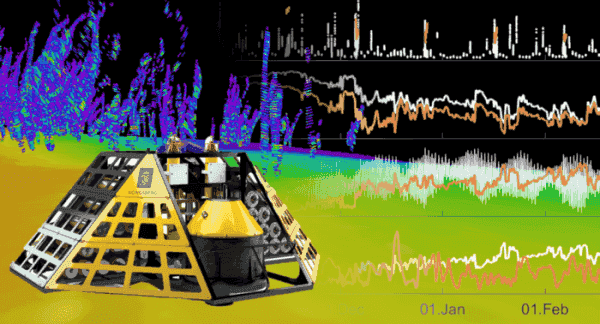At the forefront of ocean observatory technologies is the K-Lander – an innovative ocean observatory equipped with many ocean sensors, designed in collaboration between the water column group (WP4) at CAGE led by Bénédicte Ferré and Kongsberg Maritime. This observatory was designed to monitor methane release from the seabed to the water column under challenging environments, providing invaluable information on temporal and spatial variability of natural methane release that can potentially reach the atmosphere.
A new study published in Ocean Science conducted by CAGE PhD candidate Knut Ola Dølven and co-authors presents time-series data from two methane seep sites offshore western Svalbard, in the Arctic. These unique results show high variability both on hourly and seasonal time-scales and describe the interconnectivity between methane seepage and the ocean.
“The length and location are what makes these time-series unique, as they answer old and raise new questions related to this variability and how we can better constrain it in future emission estimates.” Says Knut Ola Dølven, Dølven, who conducted this study as part of his Ph.D. at CAGE.
Read more at: UIT The Artic University of Norway
The K-lander observatory with a hydroacoustic collection of nearby bubble streams together with oceanic time-series data (Photo Credit: Knut Ola Dølven and Manuel Moser (CAGE/UiT))


